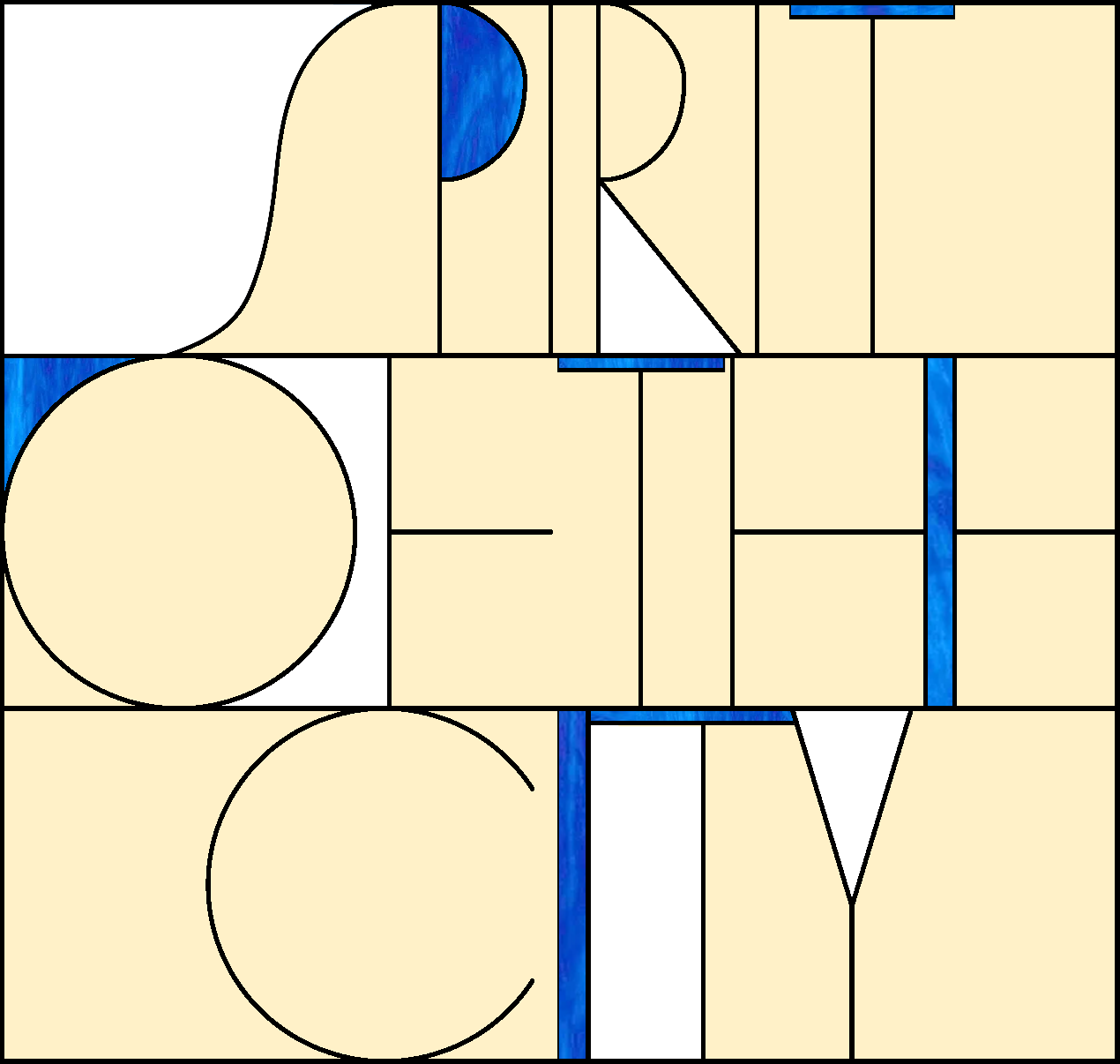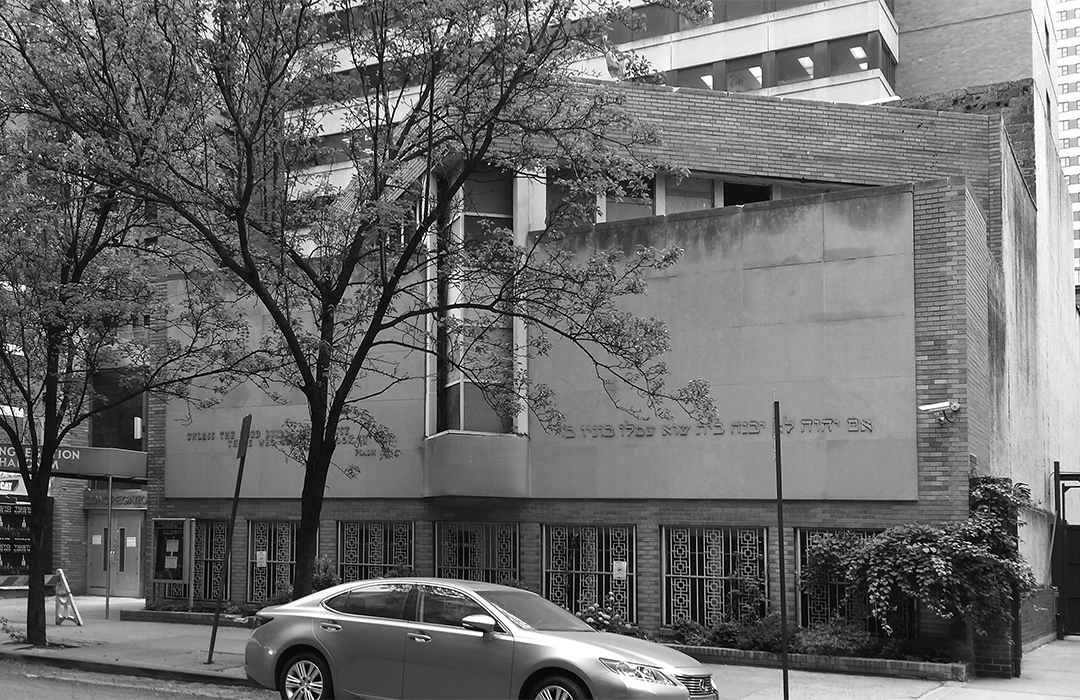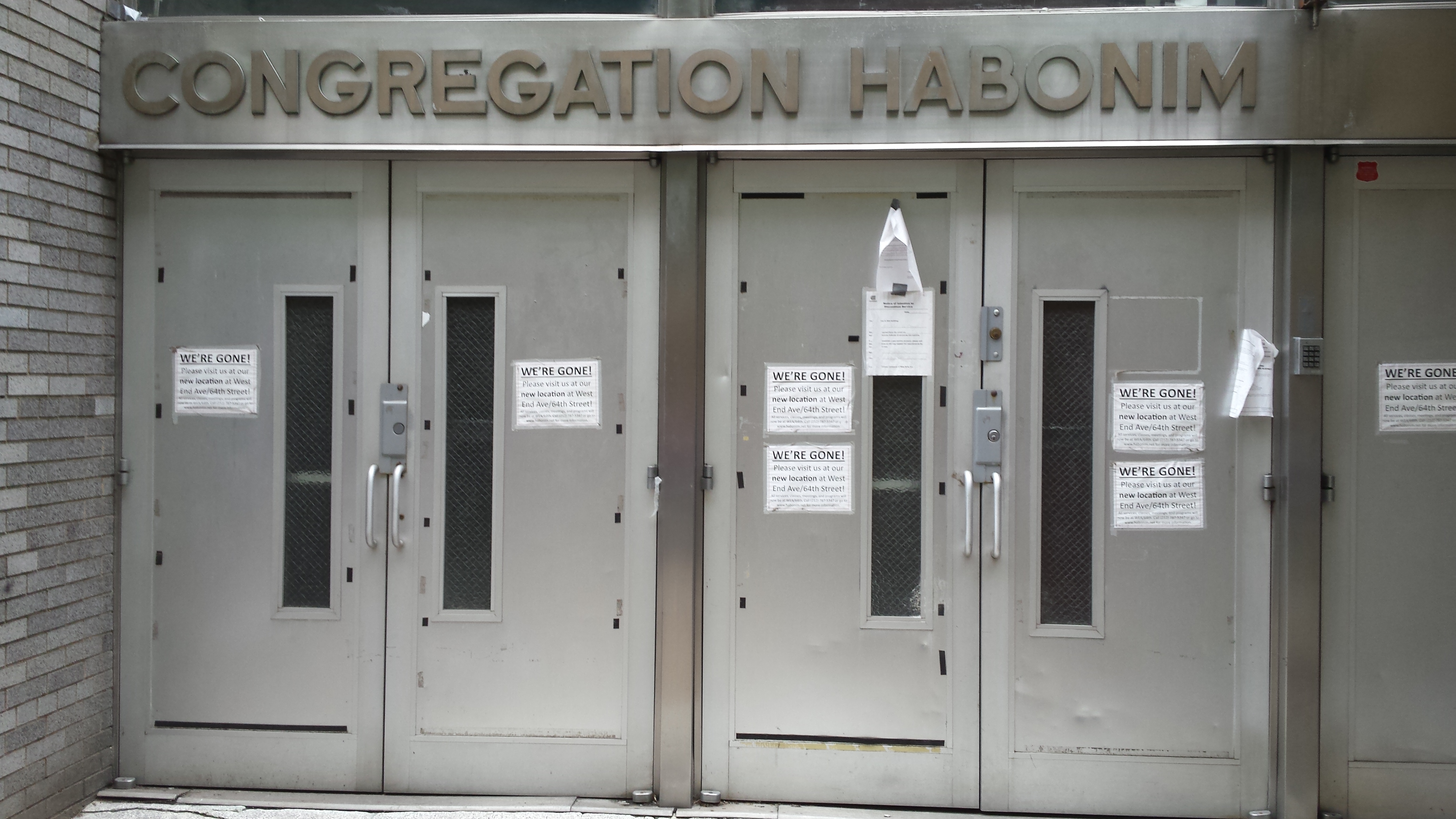
Congregation Habonim
42-46 West 66th Street
by Tom Miller
On November 8, 1938, Nazis desecrated, looted and burned synagogues throughout Germany. The night would be remembered as Kristallnacht, the “night of broken glass.” Among the temples burned to the ground was that of Rabbi Hugo Hahn, the Essen Synagogue. Hahn escaped to New York City with his wife and two children, and precisely one year later, on the anniversary of Kristallnacht, he and a group of other refugees from Nazi Germany established Congregation Habonim—“the builders.” The group initially worshiped in Central Synagogue, “then moved to other temporary quarters as the membership was swelled by fugitives from Hitlerism,” explained The New York Times decades later.
Even at mid-century, the majority of congregants had experienced Nazi persecution at best and the terror concentration camps at worst. In 1951, architect Fritz Nathan filed plans for a “three-story brick synagogue” for the congregation. The New York Times, on March 31, 1952, reported, “A ground-breaking ceremony for the new temple and community center of the Congregation Habonim, established twelve years ago by Jewish refugees from Germany, was held yesterday at the building site, 42 West Sixty-sixth Street.” Deputy Mayor Charles Howoritz and Borough President Robert F. Wagner, Jr. (later Mayor of New York) were among the speakers. The article noted, “The new building, expected to cost $300,000, will be ready for occupancy in the summer of 1953.”
…precisely one year later, on the anniversary of Kristallnacht, he and a group of other refugees from Nazi Germany established Congregation Habonim—“the builders.”
Four years later, ground was broken for a connected, one-story worship space designed by Stanley Prowler and Frank Faillance. Faced in variegated gray brick, its 66th Street façade was dominated by an immense panel of stone above ground-floor windows. It was broken by a tall, sharply two-sided bay that rose to meet the corner of the upper section, which was oriented in the opposite direction of the base.
In the meantime, Rabbi Hahn had suffered another momentous tragedy. His wife, Aenle, boarded El Al Flight 402 in London on July 27, 1955, headed to Tel Aviv. En route, the airplane was shot down by two Bulgarian MiG-15 jet fighters. Everyone on board the flight was killed.
By the time the congregation celebrated its 25th anniversary on November 8, 1964, Rabbi Hahn’s assistant was Rabbi Bernhard N. Cohn, his son-in-law. Little of the group’s founding spirit had changed. On October 25, 1964, The New York Times mentioned, “The congregation carries on in the tradition of the Liberal Judaism of Germany.”
Twenty-five years later, when the congregation marked its half-century anniversary, its membership had dropped from a high point of 900 families to 550. Still known as a “refugee congregation,” its members were becoming elderly. Brooklyn College professor of sociology Egon Mayer explained to Ari L. Goldman of The New York Times, “The factors that drew the immigrant congregation together—language, nostalgia, as well as religions—are often the very factors that repel the younger generation that wants to Americanize.”
A demolition permit for the Congregation Habonim synagogue was issued in 2015.
On August 19, 1991, a violent three-day disturbance known as the Crown Heights Riots broke out. Two seven-year-old children of Guyanese immigrants had been struck by a driver running a red light. One died, and the other was seriously injured. Black Brooklynites attacked Jews, killing an Orthodox Jewish student from Australia. Jewish homes and stores were looted. It was an all too familiar scenario to members of Congregation Habonim.
Nearly three months later, tensions between the two groups were still palpable. On December 10, 1992, Mayor David N. Dinkins; Nobel Peace Prize-winning Holocaust survivor Elie Weisel; and Civil Rights leader Rev. Jesse Jackson gathered at Congregation Habonim to announce the formation of a citywide peace campaign. Newsday reporter Bob Liff pointed out the following day that in the foyer of the synagogue were “stones from synagogues destroyed in Nazi Germany” that served as “testimony to the dangers of racial unrest.”
A demolition permit for the Congregation Habonim synagogue was issued in 2015. Within months, the striking Modernist building by Stanley Prowler and Frank Faillance was erased.
Tom Miller is a social historian and blogger at daytoninmanhattan.blogspot.com



